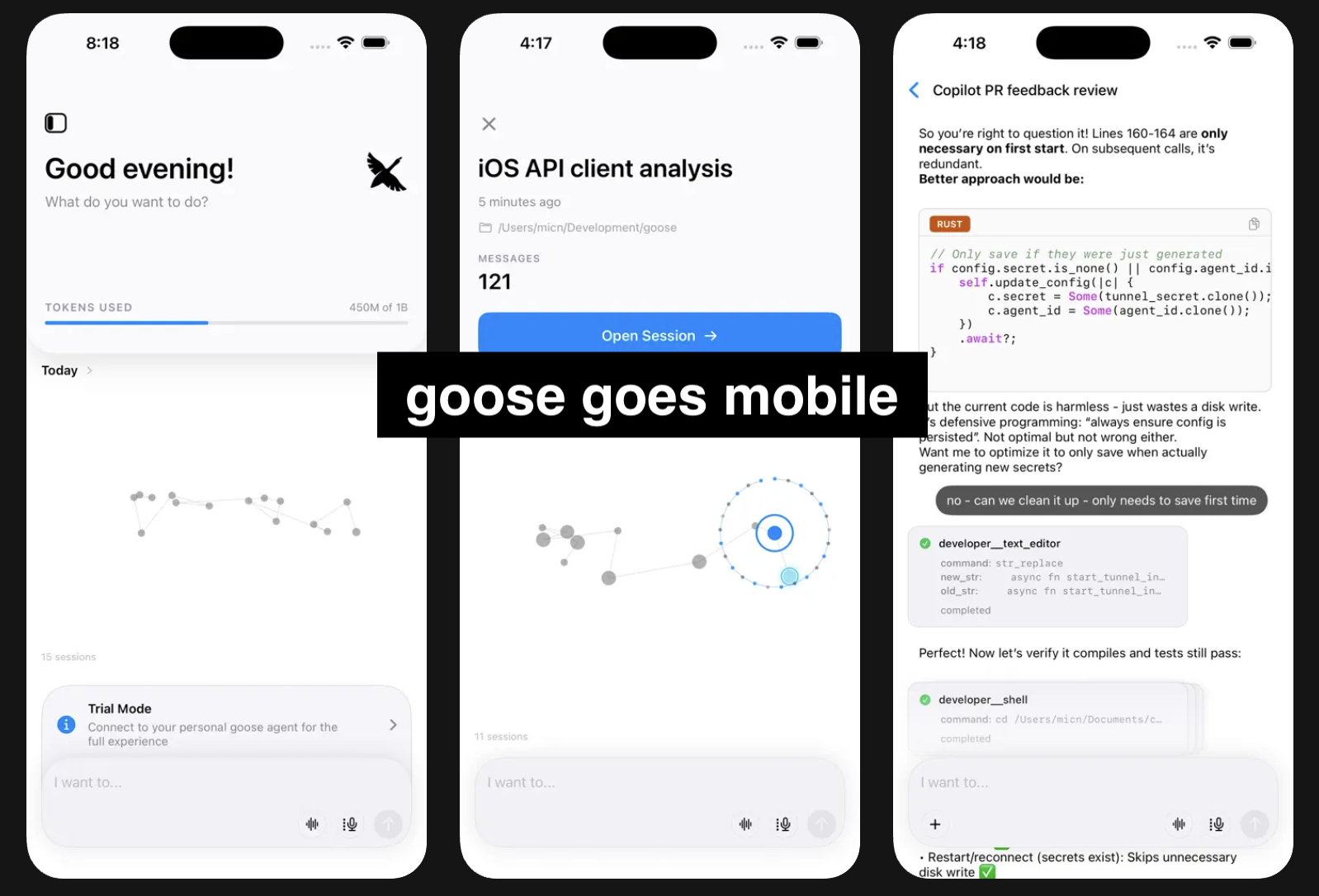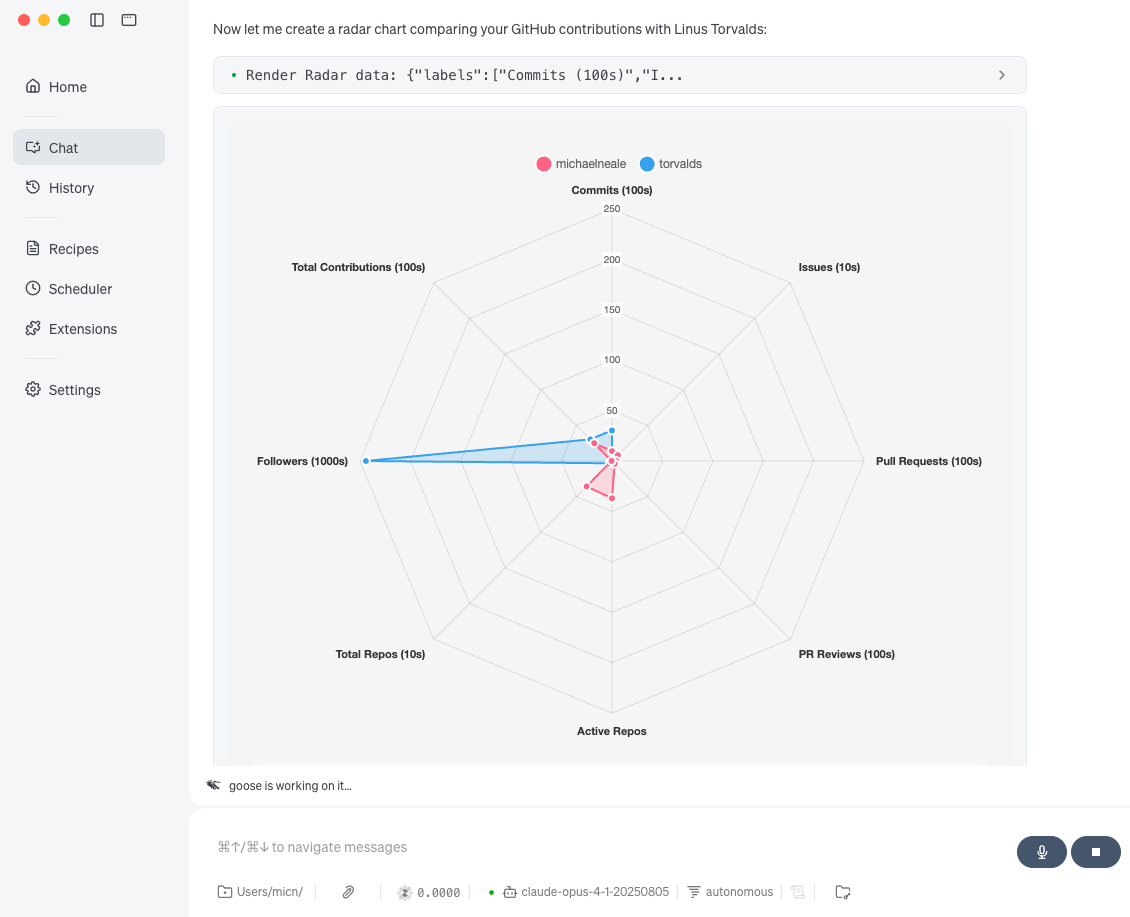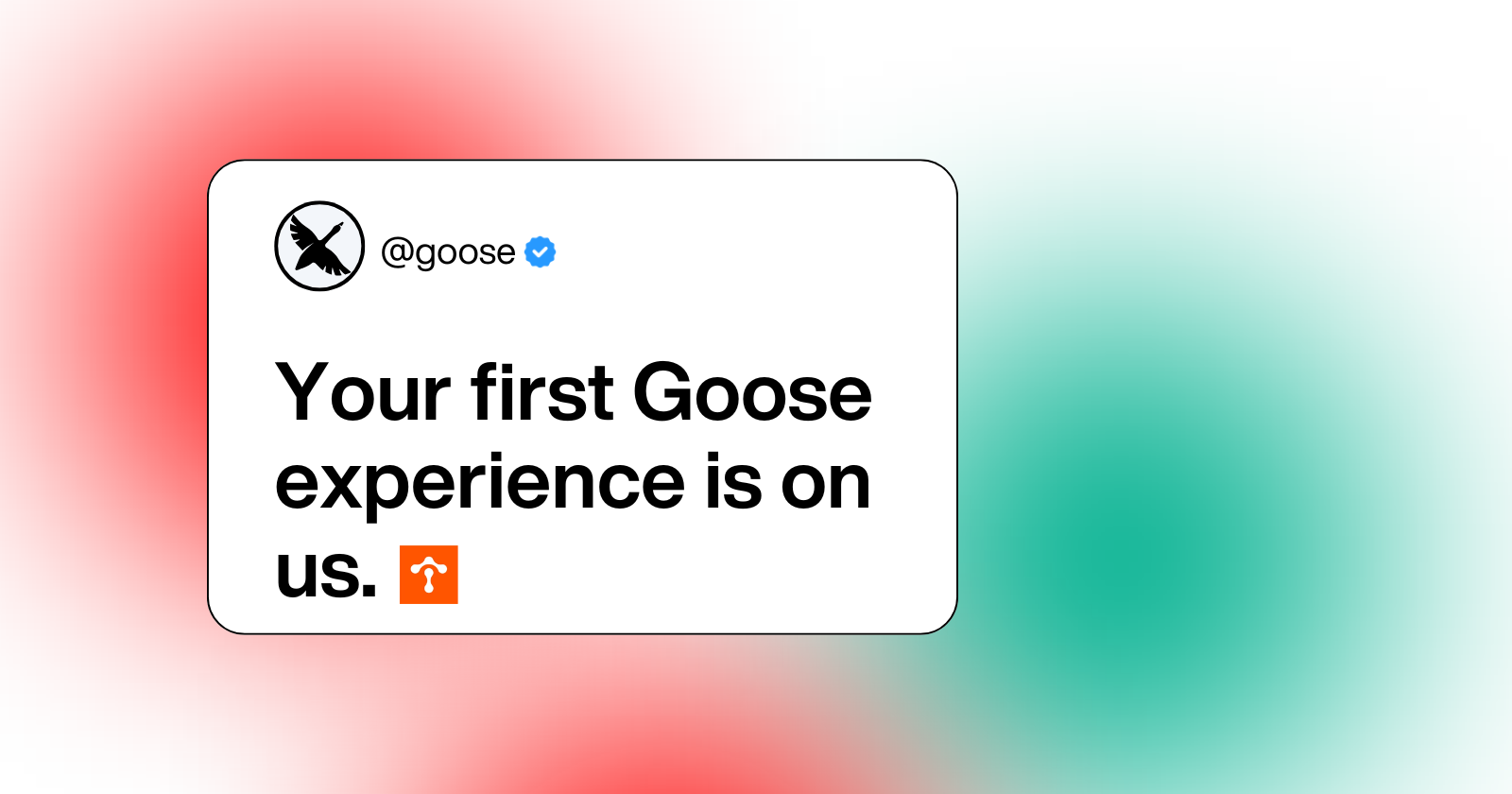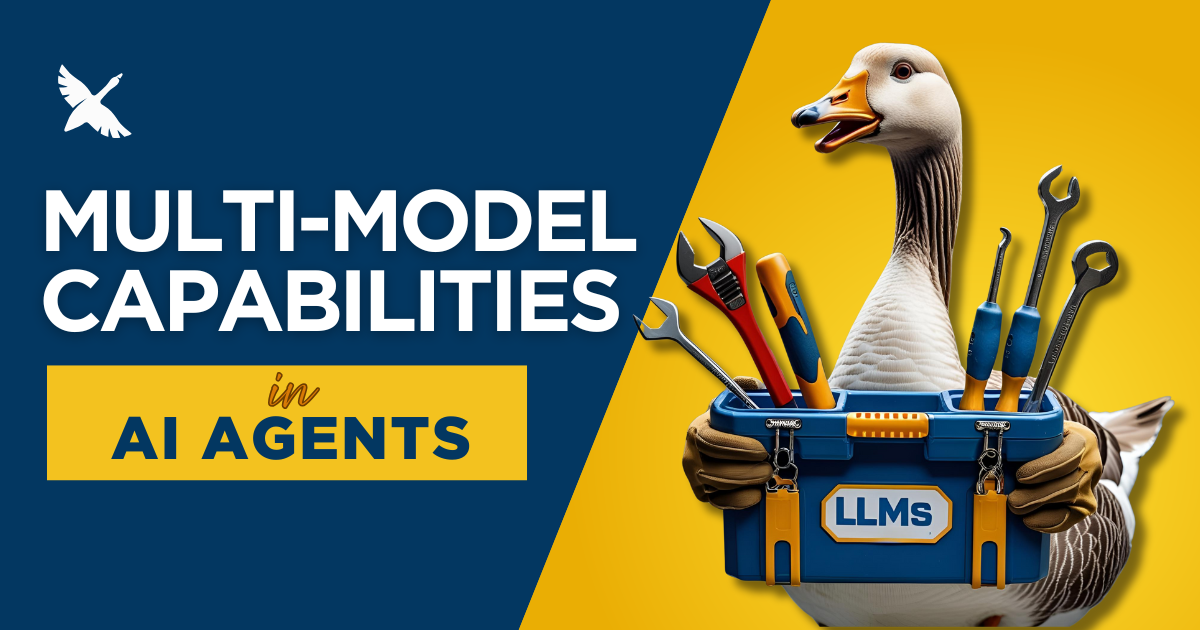goose Mobile Access and Native Terminal Support

We're excited to announce two new ways to interact with goose: a native iOS app for mobile access and native terminal integration. Both give you more flexibility in how and where you use your AI agent.

We're excited to announce two new ways to interact with goose: a native iOS app for mobile access and native terminal integration. Both give you more flexibility in how and where you use your AI agent.

Data visualization just got a major upgrade in Goose. With the new MCP-UI auto visualiser feature, you no longer need to manually request charts, graphs, or visual representations of your data. Goose now automatically detects when data would benefit from visualization and renders interactive visual components directly in your conversation.

You shouldn’t need a credit card to vibe code with goose. While goose is completely free to use, the reality is that most performant LLMs aren't. You want to experience goose in action without breaking the bank or jumping through hoops. We've been thinking about how to make that first step easier for newcomers to goose.
That's why we're thrilled about our newest provider integration: Tetrate's Agent Router Service. New goose users can get $10 in credits to use goose with any model on the Tetrate platform.

Goose recently released support for MCP-UI which allows MCP servers to suggest and contribute user interface elements back to the agent.
MCP-UI is still an open RFC being considering for adoption into the MCP spec. It works as is but may change as the proposal advances.
MCP-UI sits on top of the protocol, but instead of text/markdown being the result, servers can return content that the client can render richly (including interactive GUI content).

Over ten years ago, Docker came onto the scene and introduced developers en masse to the concept and practice of containers. These containers helped solve deployment and build-time problems, and in some cases, issues with development environments. They quickly became mainstream. The technology underlying containers included copy-on-write filesystems and lightweight, virtual-machine-like environments that helped isolate processes and simplify cleanup.
Dagger, the project and company founded by Docker’s creator Solomon Hykes, has furthered the reach of containers for developers.
One project that emerged from this work is Container Use, an MCP server that gives agents an interface for working in isolated containers and git branches. It supports clear lifecycles, easy rollbacks, and safer experimentation, without sacrificing the ergonomics developers expect from local agents.
Container Use brings containerized, git-branch-isolated development directly into your Goose workflow. While still early in its development, it's evolving quickly and already offers helpful tools for lightweight, branch-specific isolation when you need it.

Not every task needs a genius. And not every step should cost a fortune.
That's something we've learned while scaling Goose, our open source AI agent. The same model that's great at unpacking a planning request might totally fumble a basic shell command, or worse - it might burn through your token budget doing it.
So we asked ourselves: what if we could mix and match models in a single session?
Not just switching based on user commands, but building Goose with an actual system for routing tasks between different models, each playing to their strengths.
This is the gap the lead/worker model is designed to fill.

A couple of weeks back, Qwen 3 launched with a raft of capabilities and sizes. This model showed promise and even in very compact form, such as 8B parameters and 4bit quantization, was able to do tool calling successfully with goose. Even multi turn tool calling.
I haven't seen this work at such a scaled down model so far, so this is really impressive and bodes well for both this model, but also future open weight models both large and small. I would expect the Qwen3 larger models work quite well on various tasks but even this small one I found useful.

Our recently published Goose benchmark revealed significant performance limitations in models where tool calling is not straightforwardly supported (e.g., Gemma3, Deepseek-r1, phi4). These models often fail to invoke tools at appropriate times or produce malformed or inconsistently formatted tool calls. With the most recent releases of Llama4 and Deepseek v3 (0324), we are again observing challenges with effective tool calling performance, even on these flagship openweight models.